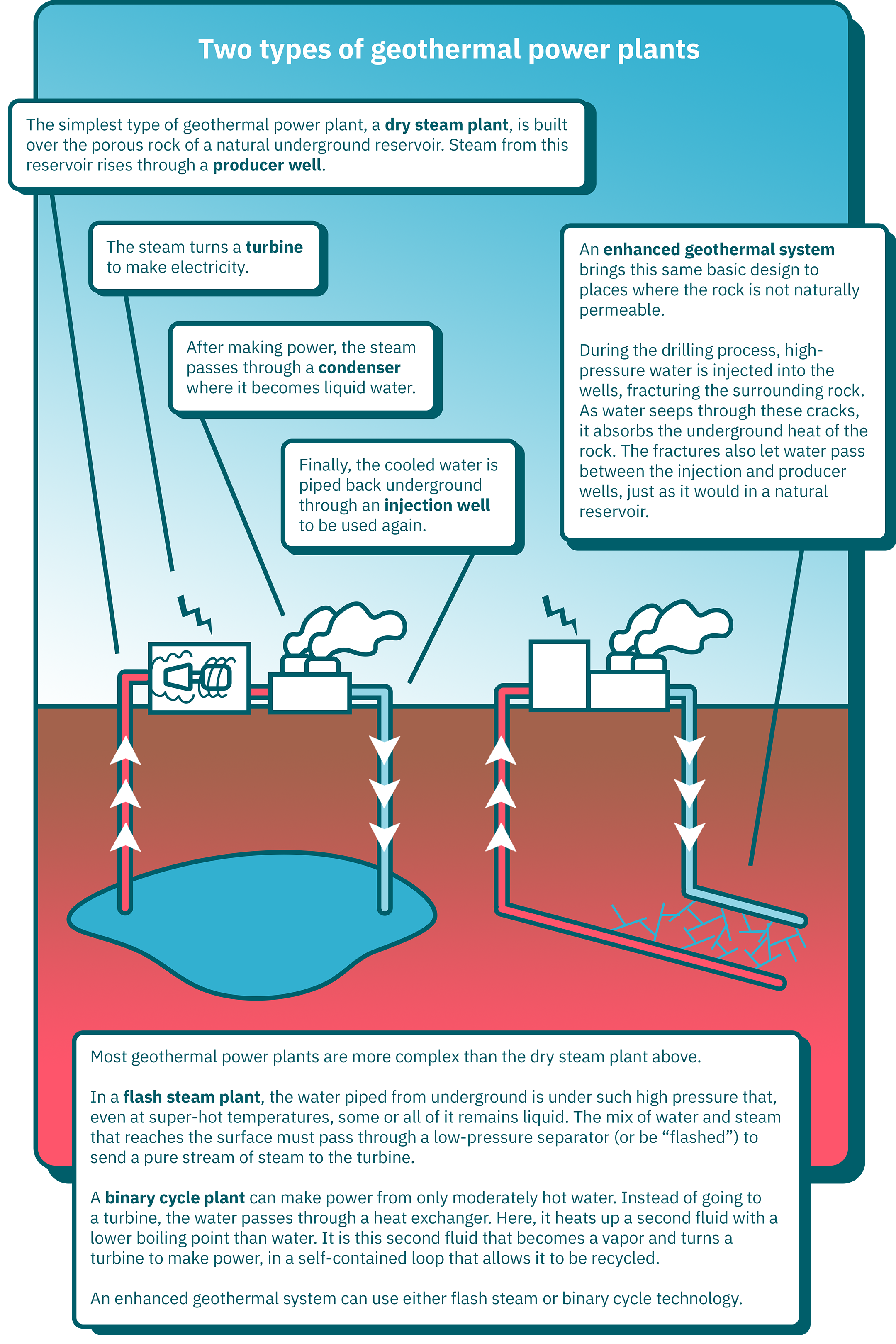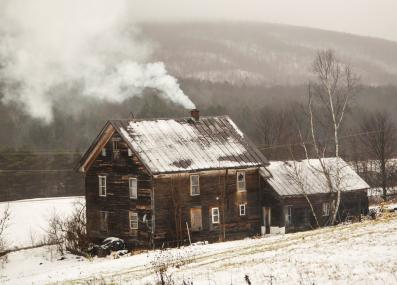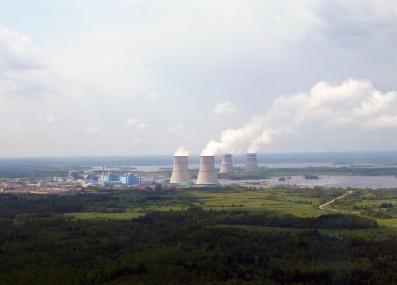New to climate change?
Geothermal Energy
Geothermal energy draws on natural underground heat to make electricity, heat and cool buildings, or provide heat and steam for manufacturing. Like solar and wind power, this energy is clean and renewable. But unlike solar and wind, it is also “firm”: available day in and day out, no matter the weather.
Geothermal is one of the few mature energy technologies (along with nuclear and hydroelectricity) that can offer firm power without producing climate-warming greenhouse gases. Although geothermal provides a tiny fraction of the world’s energy today, new technologies are swiftly expanding where and how we can harness the Earth’s heat.
The heat beneath our feet
When the Earth formed, it was extraordinarily hot, and some of that heat is still flowing from the planet's core. More heat is constantly added by the decay of radioactive metals deep underground. Where all this heat reaches the surface, it can fuel roiling hot springs or erupt in explosive geysers.
The first geothermal power plants were built on these natural sources of steam. Steam from hot springs turned a turbine to power a generator, just like in a coal-fired power plant.1
Modern geothermal plants find or make steam deeper underground. A pair of wells is drilled into the Earth, up to around 3 kilometers (nearly 2 miles) deep, where the rock is boiling hot.2 Water is pumped into the first well to seep into pores and cracks in the rock below. As the water heats up, it emerges from the second well and becomes steam that turns a turbine. Water can be continuously recycled through this system, making electricity all the while.
These power plants must be built on a very specific geology, with permeable rock and high heat near the Earth’s surface. This has mostly limited geothermal power to regions with lots of tectonic activity, like California, Indonesia, the Philippines, and Central America.
Widening the map
In small countries with rich underground heat, geothermal can be an important part of the power mix. Kenya gets almost half its electricity from geothermal,3 and Iceland uses geothermal for 30% of its electricity and nearly all its home heating.4 But globally, only around 0.3% of electricity comes from geothermal.5
Modern drilling technology is pushing these limits. As the cost of drilling falls, several countries have explored building geothermal power outside tectonically active areas, in places where the high heat needed lies deeper underground.
“Enhanced geothermal systems” (EGS) are also tapping heat from new kinds of rock formations. Engineers use horizontal drilling, pressurized water, and perforation guns to create fissures in rock that would otherwise be too solid for water to seep through. While only a few EGS plants are running today, projects in the western United States have broken records for how quickly EGS wells can be drilled—at costs that suggest geothermal energy could soon compete with coal, gas, wind, and solar across much of the world.6

Click here to see information from the infographic above in a table.
| Geothermal technology | Description |
|---|---|
| Dry steam plant | The simplest type of geothermal power plant, a dry steam plant is built over the porous rock of a natural underground reservoir. Steam from this reservoir rises through a producer well. This steam turns a turbine to make electricity. After making power, the steam passes through a condenser where it becomes liquid water. Finally, the cooled water is piped back underground through an injection well to be used again. |
| Flash steam plant | In a flash steam plant, the water piped from underground is under such high pressure that, even at super-hot temperatures, some or all of it remains liquid. The mix of water and steam that reaches the surface must pass through a low-pressure separator (or be “flashed”) to send a pure stream of steam to the turbine. Afterwards, the water is condensed and reinjected, just as in a dry steam plant. |
| Binary cycle plant | A binary cycle plant can make power from only moderately hot water. Instead of going to a turbine, the water passes through a heat exchanger. Here, it heats up a second fluid with a lower boiling point than water. It is this second fluid that becomes a vapor and turns a turbine to make power, in a self-contained loop that allows it to be recycled. |
| Enhanced geothermal systems | An enhanced geothermal system accesses geothermal energy in places where the rock is not naturally permeable. During the drilling process, high-pressure water is injected into the wells, fracturing the surrounding rock. As water seeps through these cracks, it absorbs the underground heat of the rock. The fractures also let water pass between the injection and producer wells, just as it would in a natural reservoir. An enhanced geothermal system can use either flash steam or binary cycle technology. |
Beyond electricity
Geothermal heat can be used for more than turning turbines. Boise, Idaho, which sits on a geothermally heated underground river, has been piping its naturally hot water into buildings to heat them for over 100 years.7 This kind of geothermal district heating is also found in cities like Izmir, Turkey; Munich, Germany; and most of Iceland. It can even use the same hot water that circulates in a geothermal power plant, providing heat and electricity together.
Geothermal energy is also used in paper mills, milk pasteurization, greenhouse farming, and other industries that need steam or moderate heat.
Geothermal heat pumps
Most geothermal technologies rely on deep drilling and rich underground reservoirs. But ground-source heat pumps, the most efficient way to heat and cool buildings today, can be built almost anywhere.
A heat pump acts like a sponge for heat, capturing it from one place and moving it to another. The best-known type of heat pump is an air conditioner, which soaks up heat from indoor air and pumps it outside. Reversible heat pumps can also warm buildings, by shuttling in heat from the outside. Because they move heat, rather than make heat, heat pumps are more energy efficient than natural gas or heating oil, create far less climate pollution, and in most American homes, also lower heating costs.8
Geothermal energy makes heat pumps even more efficient. A ground-source heat pump takes its heat not from the air, but from the earth. Pipes are drilled into the ground, to a depth where there are steady temperatures all year—typically around 50 °F (10 °C).9 A liquid circulates through these pipes, exchanging heat with the ground. In the winter, the system absorbs the ground’s heat and brings it inside; in the summer, it moves heat the other way.
Thanks to the constant moderate temperature, ground-source heat pumps are almost twice as efficient as air-to-air systems. Most importantly, they use only about 25% as much power when it really counts—during the coldest or hottest hours of the year. This is crucial, because if all homes are heated with electricity, power grids could be overwhelmed during these extreme weather hours. Many utilities and state agencies offer financial incentives to help people install ground-source heat pumps that put much less strain on the grid.
While geothermal heating is still rare, it is growing, especially in municipal buildings such as schools. Home systems are also becoming more common, helped by drilling and efficiency improvements that continue to boost performance and lower cost.
Geothermal in your neighborhood
Adding a ground-source heat pump to a building requires land, and installing it is costly.
As an alternative, some communities are putting in geothermal networks: a network of pipes with the holes drilled in convenient locations, to bring everyone in the area the benefits of ground-source heat pumps. These systems have been built on several college campuses around the United States, and utilities have started building them for entire neighborhoods, including in Boston, Massachusetts; Brooklyn, New York; and Washington, D.C.
Geothermal networks offer fairer access to this clean source of heat, while sharing the costs of drilling across many buildings. Today’s pilot projects will help show whether, and where, geothermal networks can provide heat as cheaply as natural gas, giving utilities a clean way to heat whole neighborhoods or cities when gas pipes reach the end of their useful life.
Updated August 8, 2025.
1 EBSCO: "First geothermal power plant begins operation," Dutch, Steven, 2023.
2 National Renewable Energy Laboratory: "Geothermal Resources: Resource Exploration and Characterization." Updated May 21, 2025.
3 International Energy Agency: "Country Profile: Kenya." Accessed July 8, 2025.
4 International Energy Agency: "Country Profile: Iceland." Accessed July 8, 2025.
5 Gutiérrez-Negrín, Luis C.A. "Evolution of worldwide geothermal power 2020–2023." Geothermal Energy 12 (2024). https://doi.org/10.1186/s40517-024-00290-w.
6 Horne, Roland, et al. "Enhanced geothermal systems for clean firm energy generation." Nature Reviews Clean Technology 1 (2025). https://doi.org/10.1038/s44359-024-00019-9.
7 City of Boise: Geothermal.
8 Wilson, Eric J.H., et al. "Heat pumps for all? Distributions of the costs and benefits of residential air-source heat pumps in the United States." Joule 8 (2024). https://doi.org/10.1016/j.joule.2024.01.022.
9 The depth varies from project to project. A “vertical well,” the most common, uses standard well-drilling equipment and practices to place a double U-shaped pipe several hundred feet deep. A “horizontal well,” sometimes used in homes with large yards, may be less than 10 feet deep. Either way, at these shallow depths, the geothermal heat does not come from the Earth’s core: It is mainly heat energy from the sun, which the rock and soil hold onto year-round.










